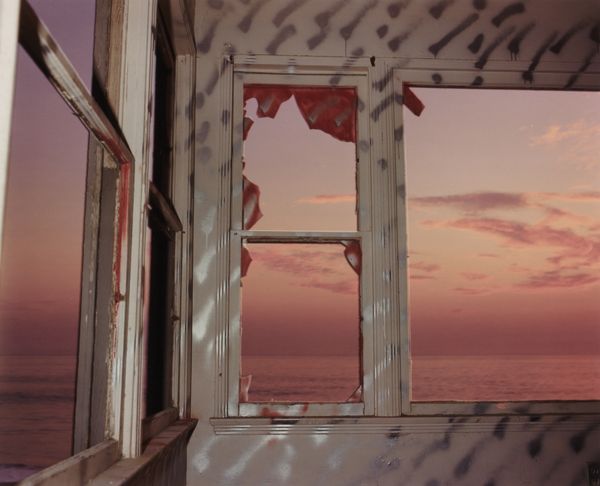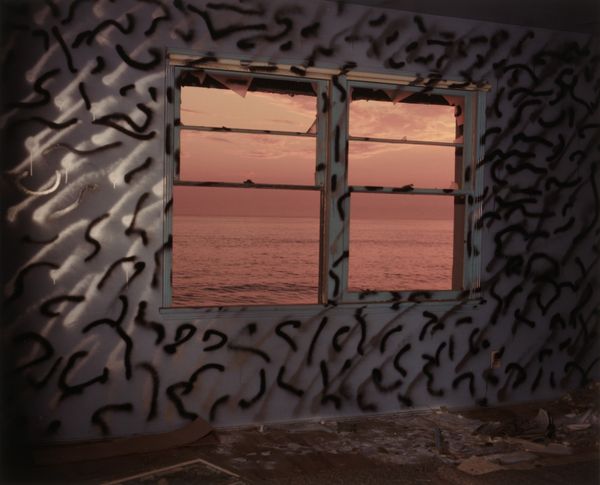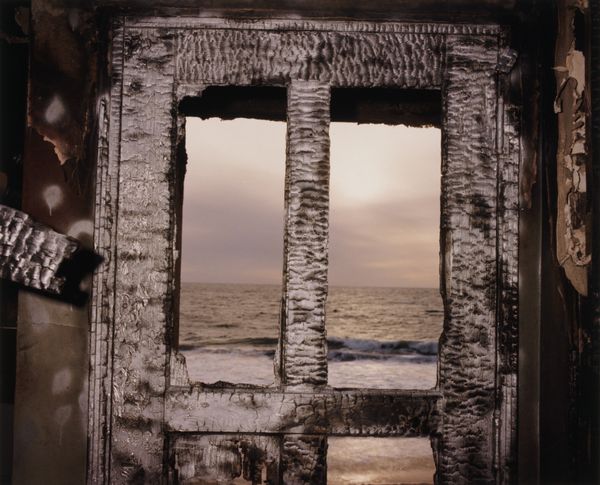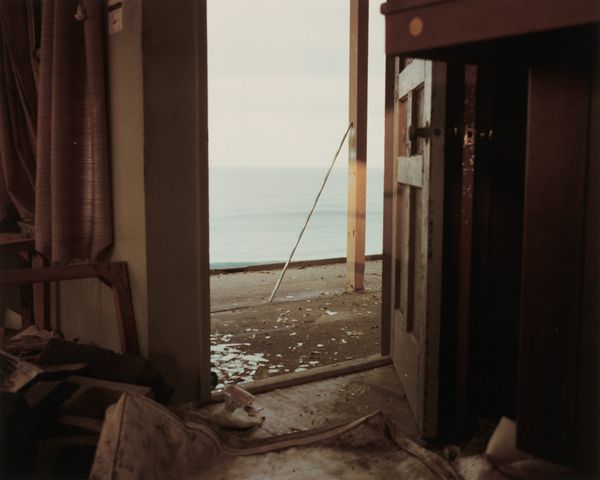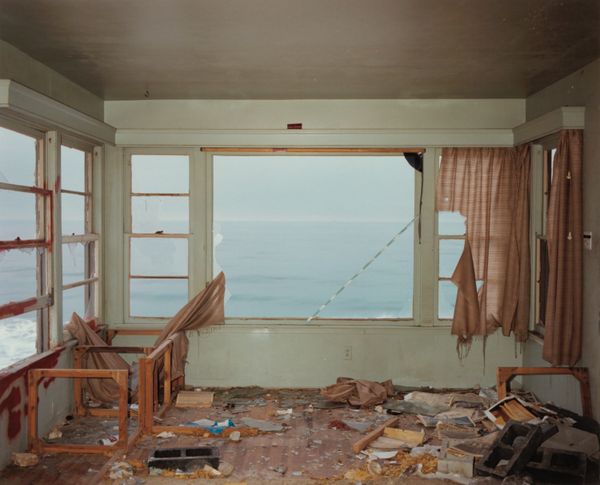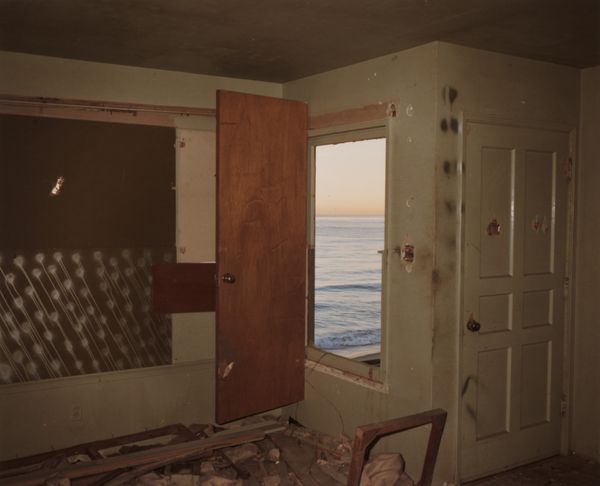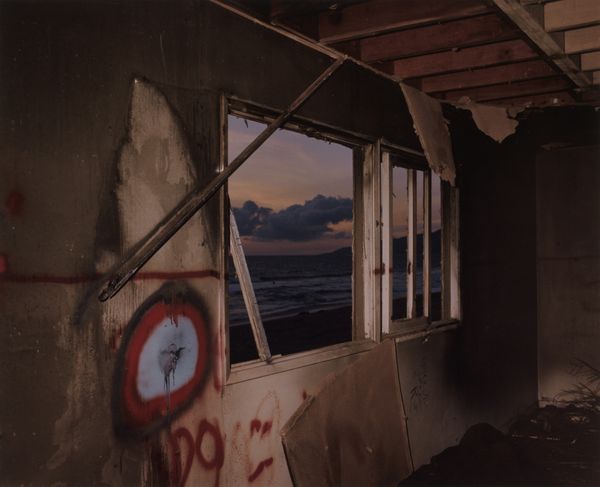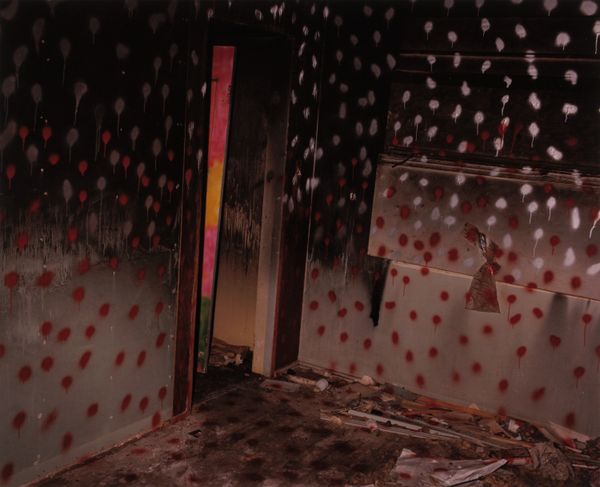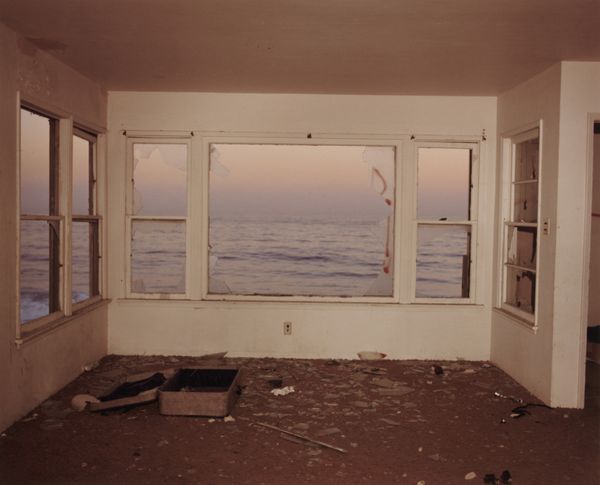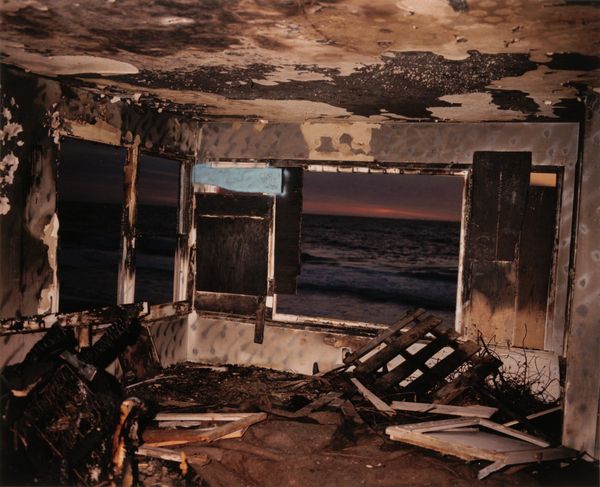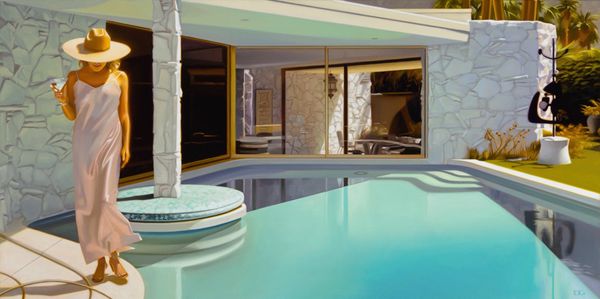
Dimensions: image: 24.77 × 30.48 cm (9 3/4 × 12 in.) sheet: 27.94 × 35.56 cm (11 × 14 in.)
Copyright: National Gallery of Art: CC0 1.0
Editor: So, here we have John Divola's "Zuma #19," a C-print photograph taken in 1978. I find myself strangely drawn to the contrast – this dilapidated room practically crumbling around the edges, but through the window, there's this stunning, calm ocean view. What do you see in this piece? Curator: That tension is exactly what makes it sing, isn't it? It's a haunting visual poem about impermanence, the decay of the human-made juxtaposed with the relentless eternity of nature. The white spray paint, like ghostly graffiti, hints at a forgotten human presence, maybe even a desperate attempt to reclaim a space. Makes me wonder who left their mark here, and why? Does the ocean feel like a promise or a threat through that ravaged window? Editor: I hadn't thought about the ocean being a threat. It’s more of a melancholy backdrop to me, a symbol of what’s permanent. Curator: But consider that ever-encroaching sea; a relentless tide constantly wearing down the coastline... Just as time wears down walls. It also makes you think about landscape photography; usually its nature untouched, here its a collision of nature and humanity, nature taking it all back... Does this make you consider it a landscape piece or more of a cityscape one? I suppose the magic is in the fact it lies somewhere between the two. Editor: Wow, I never looked at it like that, this constant state of flux. It’s not just about decay, it's about transformation. Curator: Precisely! Art thrives in those in-between spaces, challenging our perspectives, offering not answers, but perhaps a clearer vision of our own transient existence. And with "Zuma #19," Divola hands us a lens – blurred perhaps, but captivatingly clear – through which to consider these themes. Editor: That tension, you're right, it elevates the whole piece. It’s more than just a derelict space. Curator: Absolutely, and now, thanks to your insight, I might never see it quite the same way again. Always a rewarding outcome when exploring a complex and layered artwork such as this.
Comments
No comments
Be the first to comment and join the conversation on the ultimate creative platform.

